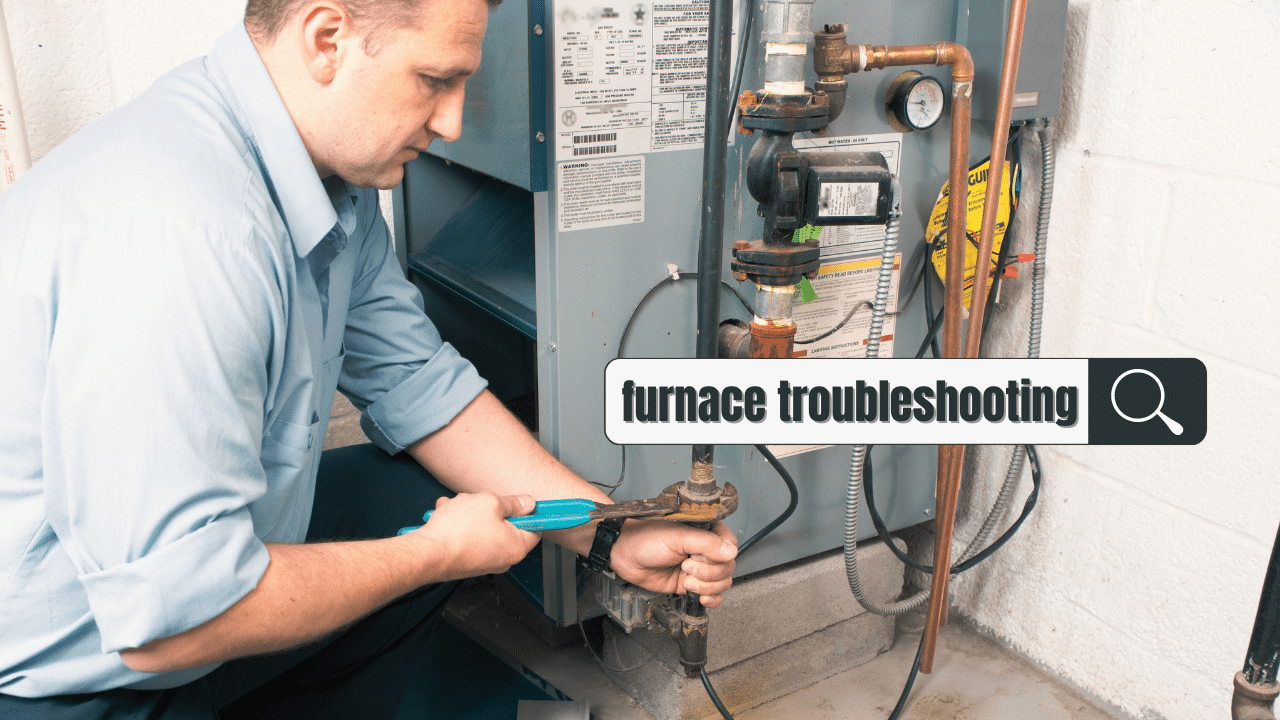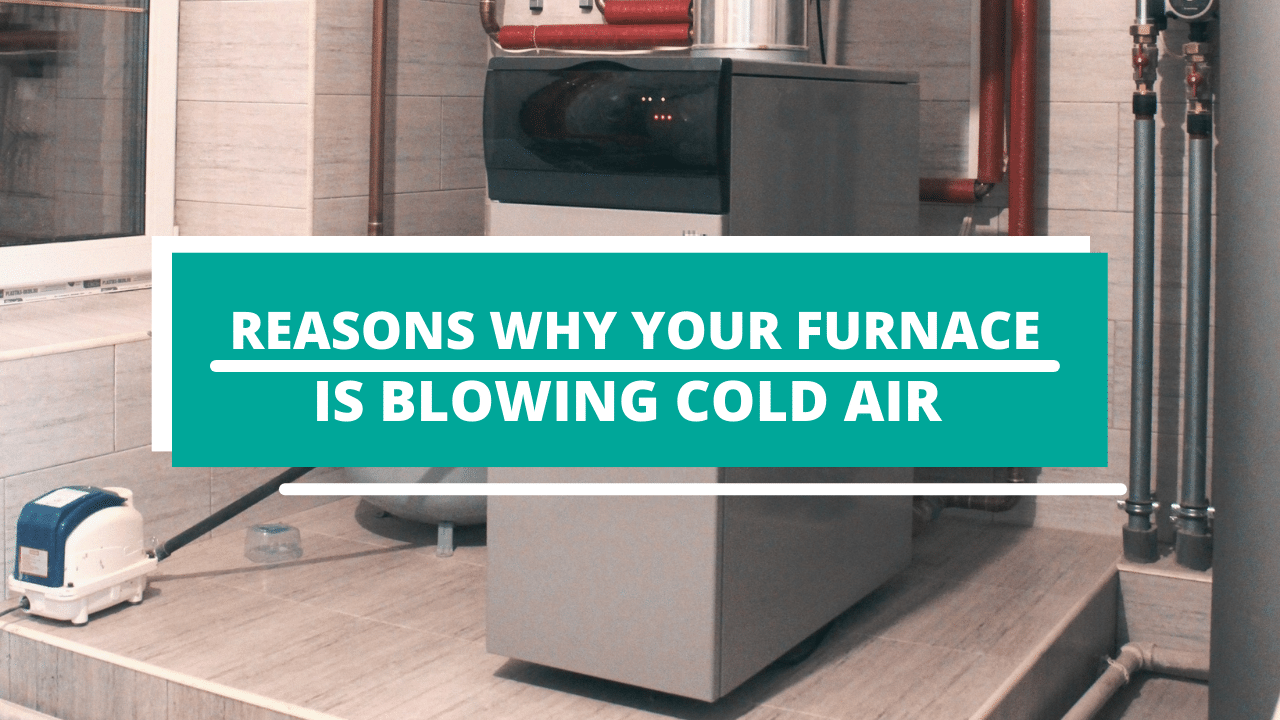Furnaces are extremely useful to modern living, especially if you live in a colder climate. They work to heat entire buildings, delivering warmth to each room.
However, sometimes issues can arise. A common example of an issue with a furnace is that it can begin to blow cold air through the vents, rather than warm air. This can be concerning, especially as we enter fall and winter.
Cold air can be an indicator that something is not quite right with your furnace. There are many potential causes for your furnace to be blowing cold air. For example, it could simply mean that the fan setting is switched on, or it could be something more serious like a faulty valve or dirty flame sensor. In any instance, a technician can assist with this issue.
This article will outline some of these potential causes, as well as how you can go about assessing the situation if this happens to you.
What is a Furnace?
Before we discuss why your furnace might be blowing cold air, it might help to define what a furnace is.
A furnace is a unit that is used to heat up a building. They work by heating air using either gas, electricity, or oil to blow heated air through a series of ducts. This warm air is then distributed throughout the building to warm each room.
Common Causes of Cold Air Blowing Out
There are a few common reasons why your furnace might be blowing out cold air. This section will outline some of these common causes of cold air blowing out of your furnace, and how you can go about dealing with these issues.
Thermostat Problems
One of the most common causes of temperature issues with furnaces is that there is a problem with the thermostat. If you have had your thermostat for a while, your first port of call should be to replace the batteries as this could be a quick fix for furnace issues. Alternatively, if you have recently installed a new thermostat yourself, it might be incompatible with your furnace. If you think this might be the case, it is recommended that you seek advice from an HVAC professional. It is always best to consult a professional contractor to select and install the correct parts for your furnace.
Finally, someone might have changed the settings on your thermostat. In this instance, it is possible that someone has changed the fan setting to ‘ON’ to continuously blow cold air. A quick fix for this is to return the setting to ‘AUTO’ so that the heater will come on when it is colder. (Related: When Should You Use Emergency Heat?)
Empty Oil Tank
Another cause of cold air from your furnace could be that the oil tank is empty. If your furnace is oil-fueled and runs out of oil, it cannot produce any heat as the burner won’t light. The best way to manage this situation is to contact a professional who can assess the oil tank properly.

Blocked/Old Air Filter
Sometimes air flow to your furnace can be obstructed by a blocked air filter. Air filters should be changed occasionally, to ensure quality air flow is provided to the furnace. If the air filter is old or has not been updated in a while, it won’t be as effective at filtering the air. This can, in turn, cause the furnace to overheat. An overheated furnace will shut off its burner and will only blow out cold air as a precaution.
Blocked Oil Filter
As with a blocked air filter, an oil-fueled furnace’s oil filter is susceptible to a build-up of dirt and dust. If this gets blocked or clogged, it can affect the temperature of the air that is blown from your furnace as the ignition process is disrupted. Similarly, the oil or gas burner itself can get dirty which will create issues for the furnace when it comes to ignition.
It is possible to clean the oil filter and burner at home, however it is always advised that you seek the help of a licensed professional to ensure the project is completed properly and that no issues arise further down the line.
Pilot Light has Gone Out
A pilot light is a small flame that is used to ignite gas-fueled appliances such as furnaces and water heaters. Some older furnaces operate with a pilot light that runs continuously. However, the flame can occasionally be extinguished by a gust of air that passes through the appliance.
If this happens, it can be easily relit either by yourself – if you feel comfortable doing so – or by a licensed HVAC professional.
Faulty Valve
However, if you find that the pilot light on your gas furnace will not light, this could mean there is an issue with the gas valve. For example, your gas valve could either be faulty or could have a build-up of dirt which needs to be removed.
It should be noted that sometimes the pilot light will relight, but it keeps going out. In this instance you should contact a HVAC technician as it could indicate a problem with the thermocouple.
Dirty Flame Sensor
If you notice that when you switch on your furnace, that it blows warm air for a short time and then it blows cold, this could indicate that the flame sensor needs cleaned.
The flame sensor is the part of the furnace that supports your furnace to heat the air as it travels through the air ducts. When it is dirty, the gas burner is unable to stay alight and cannot heat the air. If you think this is the case with your furnace, it is recommended that you consult a professional to clean it as it is a delicate and intricate process.
Other Causes
Some other causes might include:
What to do if my Furnace is Blowing out Cold Air?
Having outlined some of the common causes of cold air blowing out of a furnace, it is worth discussing what we should do if you notice this happening to your furnace.
Firstly, you can attempt to troubleshoot your furnace to assess the situation. This essentially allows you perform a diagnosis and can help you know whether you can solve the issue yourself or if you will need to seek the help of a licensed technician. Troubleshooting is also useful as it allows you to better inform the technician of the problem if you do need to consult their assistance.
Secondly, having assessed the situation for yourself, you might decide it is best to seek the help of a HVAC professional. You might even choose to do this in the first instance if you don’t feel comfortable troubleshooting your furnace yourself. Both options are fine, and an HVAC professional will always be happy to assist you.

How to Troubleshoot Your Furnace?
Having addressed some of the various reasons why your furnace might be blowing cold air, it is worth exploring some of the ways you can go about assessing the situation in the first instance. Previously, we noted that you can troubleshoot your furnace, but how can this be done?
Below are several steps, based on the above issues, you can take to troubleshoot your furnace at home before you consult a professional:
- 1Check the fan setting on the thermostat is turned to ‘AUTO’ rather than ‘ON’ as this will mean the fan might have been activated and continuously blowing cold air.
- 2Try relighting the pilot light. Your furnace manual should come with instructions on how you can do this yourself. Otherwise, consult a HVAC professional.
- 3Check for water pooling. If the condensate line is blocked by dust, dirt, mold etc., it can cause pooling.
- 4Try switching the unit off and on again. This sounds simple, but it is a useful way of telling if the flame sensor is dirty as the air will typically be warm for a short time and then will blow cold.
How can I prevent my Furnace from Blowing Cold Air?
The most effective way to prevent your furnace from blowing cold air, and to prevent any issues in general, is to stay up to date with the maintenance of it. This can be done by getting it checked regularly by a HVAC technician to ensure everything is in working order and there are no blockages or dirt build-ups.
Conclusion
In this article we have discussed some of the various reasons for your furnace blowing cold air. We found that there are some particularly common causes for this issue. For example, it could be that your fan setting has simply been activated on your thermostat and needs to be switched to the ‘AUTO’ setting.
It could also be the likes of a blocked air filter or oil burner. Other, more serious issues could be that there is a fault in the valve, or the flame sensor needs to be cleaned. We found that it I possible to troubleshoot your furnace before you consult a professional, if you feel comfortable doing so, as this may speed up the process.
However, as we approach fall and winter, it is a good idea to get your furnace checked anyway to ensure everything is in working order.

